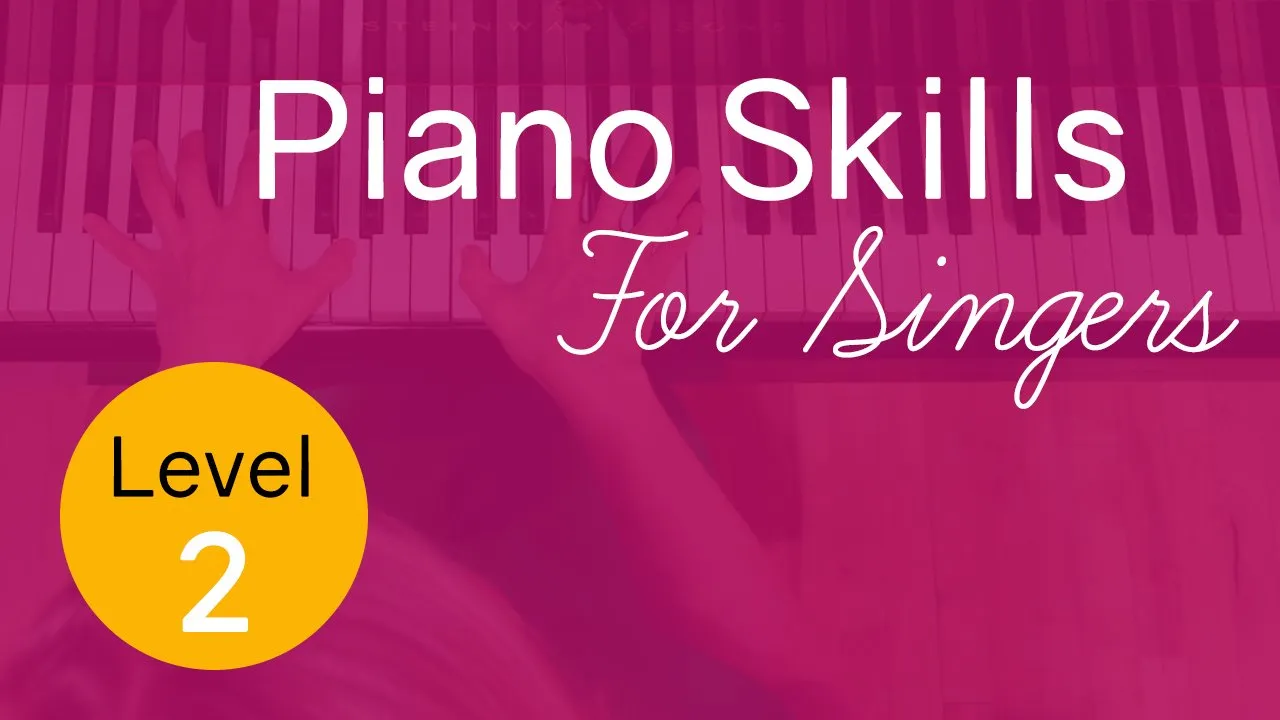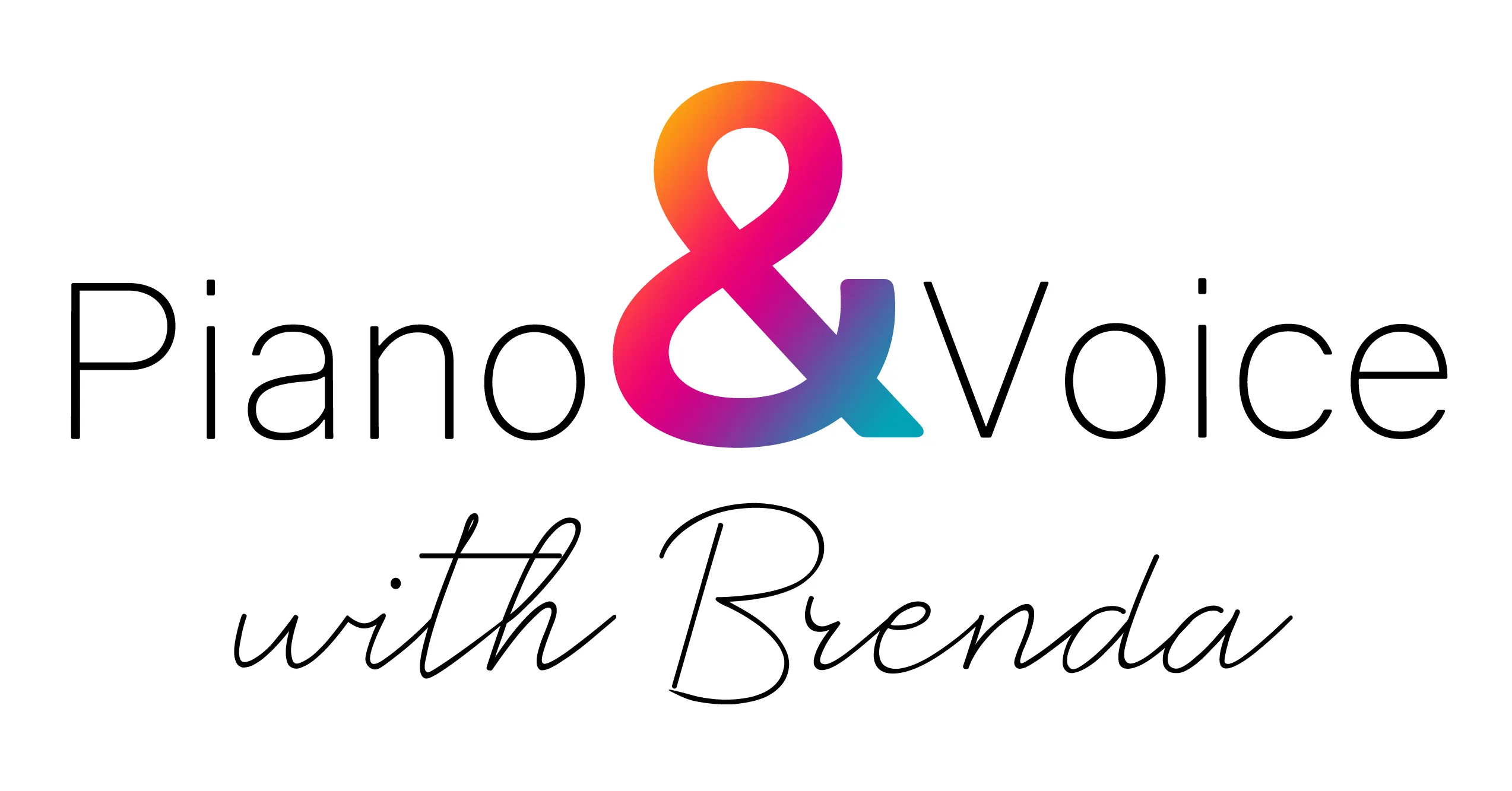This tutorial is part of my Piano for Singers series, where I teach the exact skills that singers need to provide a foundation for musical and professional success. In this tutorial, I teach you how to play voice exercises on piano with an easy method. Minimal theory required!
Voice exercises are a must
Voice exercises or vocalises are a must for every singer. These are the patterns you will use to warm up your voice and build your technique. Mastery of these patterns will empower you to teach voice lessons and warm up a choir or a cast of singers.
My goal in this tutorial is to give you a simple and effective way to build these skills on piano so you can gather the skills you need as soon as possible. All of the exercises I am going to show you in this lesson are built from the first five notes of the major scale. As a voice teacher of 25+ years, I use these exact exercises for around 75% of every lesson I teach. These are truly one-size-fits-all exercises.
These voice exercises are so versatile that you can customize them to suit whatever you are trying to achieve by doing them. You can change the vowel or syllables, the range, the articulation and the volume to suit your own purposes.
Five Note Major Scales
The first five notes of the major scale have the same pattern of whole steps and half steps, no matter what key you are in.
Starting from the root (the first note of the scale), the pattern goes:
Whole Step, Whole Step, Half Step, Whole Step

Since every major scale is made up of the same intervallic relationships, you can follow this formula to figure out the first five notes of any major scale.
Master the Five Note Major Scales
Now that you understand how the five note major scales work, you need to practice them in all the keys. Practice the pattern going up and down by half steps, since you will be playing them this way while practicing and teaching lessons.
Counterclockwise via the Circle of 5ths: C, F, Bb, Eb, Ab, Db/C#, Gb/F#, B, E, A, D, G, C.
Clockwise via the Circle of 5ths: C, G, D, A, E, B, F#/Gb, C#/Db, Ab, Eb, Bb, F, C
Download a free Circle of 5ths printable here:
Up by Half Steps: C, C#, D, Eb, E, F, F#, G, Ab, A, Bb, B, C.
Down by Half Steps: C, B, Bb, A, Ab, G, Gb, F, E, Eb, D, Db, C.
Want to get MORE from your practice time?
Sign up to download my FREE 20-Minute Piano Practice Routine for Singers!
Voice Exercise Protocol
Before we dive into the exercises, we’ll want to review the protocol you’ll follow when playing voice exercises.

Step #1: Play the triad in the key
Step #2: Play the exercise
Step #3: Play the triad in the key again
Step #4: Play the traid in the next key (a half step either higher or lower)
Voice Exercise Protocol
The first three exercises are ones I use the most frequently. You can use any vowel sound you want and can use them to work on any registration you like.
You’ll want to practice each one of these patterns in all 12 keys, going up and down by half steps. If you find a few keys that are particularly difficult for you (Hello B major and Gb major!), then isolate those and practice them longer.
1. The Five Note Scale

2. Major Triad Outline Voice Exercises

3. Arpeggio Voice Exercise
This might look like it ventures outside of our 5 notes, but the top note is just a repeat of the bottom note!

Make sure to use fingering 1-2-3-5-3-2-1!
4. 5 note major scale with triad outline

5. Sing the fifth and descending scale

6. Voice Exercises for Flexibility
I like to use these exercises on different vowels to develop more flexibility in the voice.



Voice exercises to develop your piano technique
The bonus of these exercises is that you are actually building strength and flexibility in your hands as you work on them. If you want to get more from these exercises, practice them in your left hand and then practice them hands together.
Be mindful of your posture and hand position while you do these exercises to avoid injury and make your best sound.

Are you ready to LEVEL UP your piano playing using a proven method?
Are you tired of STRUGGLING at the piano and want an easier way?
Have you taken piano lessons in the past and found that the process was SLOW, FRUSTRATING, or DIFFICULT ?
Piano Skills for Singers Level 2 is my #1 bestselling course, which has empowered hundreds of singers worldwide to amp up their piano skills and be confident and productive at the keyboard.
We skip the busy work from traditional piano classes and go right for the skills that will directly support your work as a singer, voice teacher, and choral conductor.

 Double time vs Double Time feel
Double time vs Double Time feel